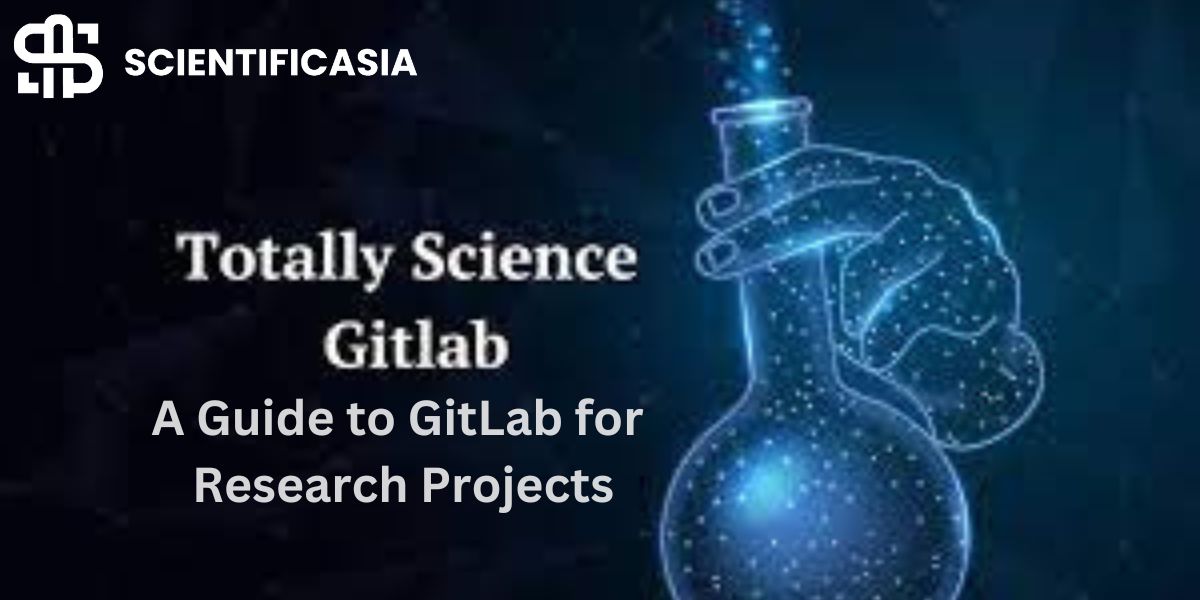A specific version of GitLab designed only for scientific research is called Totally Science GitLab. It is made specifically to accommodate the requirements of researchers and acts as a specialized platform for effective version control, productivity, and teamwork. Totally Science GitLab wants to transform how research teams store data, track changes, and cooperate easily within the scientific community by giving them a strong framework.
What is GitLab?
GitLab is a robust platform that was first created for software development, but it has found a home in the scientific community and is transforming how scientists work together, handle data, and monitor changes. This article examines the various links between GitLab and science, examining why it has grown to be an essential tool for contemporary scientists.
The Boundary Between Complete Science And Science GitLab
Science is a discipline that is always changing and depends a lot on teamwork and careful data management. Totally Science GitLab connects scientific research and effective project management with its extensive toolkit. Scientists have been waiting for this missing piece for a long time.
The Complete Need of Science for Scientists GitLab
While searching for ground-breaking discoveries, scientists are frequently deluged with data, code, and contributions from numerous sources. Science GitLab gives scientists the structure and management they need to successfully negotiate this challenging terrain. Its collaborative features enable smooth teamwork, and its version control features guarantee that research remains replicable.
Important Elements For Scientists
A plethora of features catered specifically to the scientific community are available with Totally Science GitLab. With features like version control, issue tracking, continuous integration, and containerization, it gives scientists the resources they need to take on even the most difficult scientific problems. Its strength lies in its adaptability to the different research procedures used by scientists.
GitLab vs. Other Version Control Systems: A Complete Comparison
Totally Science GitLab is a flexible and effective version control system option for scientific research. Let’s examine its special benefits for scientists and compare it to the well-known GitHub and Git.
Overview of GitLab’s Features:
Using Git for Version Control
GitLab makes use of the Git version control system to let developers manage multiple project versions, track changes, and work together on code. Git ensures a solid and well-organized approach to code management by making branching, merging, and history tracking efficient.
Monitoring Issues
GitLab has an integrated issue-tracking system that makes project management easier by letting users create, assign, and rank tasks. This tool ensures accountability and openness throughout the development process by streamlining team member communications.
Continuous Deployment/Continuous Integration (CI/CD)
With CI/CD automation, GitLab streamlines the software development process, facilitating the easy integration and implementation of code modifications. This uses automation to speed up the development cycle, promote collaboration, and improve the quality of the code. Testing, building, and deployment are all automated.
Cooperation Instruments
GitLab offers a range of collaborative tools, such as discussion boards, wikis, and code reviews, to help team members communicate and share information effectively. These resources support an open and cooperative development environment.
Integrated DevOps Functionality
GitLab unifies communication, continuous integration and delivery, and version control on a single platform to facilitate DevOps processes. This simplified method aligns the development and operations teams, increases productivity, shortens development cycles, and fosters a cohesive DevOps culture.
Knowledge of the Science Underpinning GitLab
Version Control: An Analysis of Its Importance in Software Engineering
Software development requires version control because it allows several people to collaborate on a project at once. The science GitLab version control system makes sure that tracking changes, promoting cooperation, and reducing conflicts in code development are done in a methodical and organized manner.
The Function of Distributed Version Control Using Git
With the help of a distributed version control system called Git, developers can collaborate independently and easily combine their modifications. GitLab makes use of Git’s features to improve development process flexibility by facilitating distributed collaboration, effective code management, and offline working.
Using Science to Improve GitLab’s Architecture and Features
GitLab’s architecture is based on scientific concepts and includes methodical techniques for automation, version control, and teamwork. The platform’s architecture emphasizes reproducibility, transparency, and methodical documentation in software development processes, all of which are in line with scientific methodology. Integrating these ideas improves the dependability and legitimacy of projects that are maintained on GitLab.
The Effect of GitLab on Scientific Research:
Using GitLab for Collaboration in Scientific Teams
GitLab gives scientists a centralized platform to organize code, exchange resources, and plan projects, which improves teamwork in scientific settings. Its collaborative capabilities, like problem tracking and code review, encourage open communication, facilitating easy teaming and information sharing among scientists.
Version Control in Scientific Research
GitLab’s version control system makes sure that modifications to research projects are systematically tracked. Researchers can work together on a variety of branches, efficiently manage experimental iterations, and save an extensive project development history. In scientific research, this encourages accountability, reproducibility, and effective teamwork.
Ongoing Integration for Scientific Computing
GitLab’s CI/CD features automate scientific computing testing and deployment procedures. This minimizes errors and improves the dependability of scientific procedures by guaranteeing that code modifications are methodically validated. Continuous integration shortens the development cycle, freeing up researchers to concentrate more on their scientific objectives.
Optimal Methods for Using GitLab in Scientific Research:
Creating GitLab Repositories for Scholarly Works
Creating GitLab repositories entails organizing projects to maximize collaboration and version control. To ensure the safe and efficient management of research assets, researchers should identify repository architecture, organize data, and set up access controls.
Branching Techniques for Reproducibility and Experimentation
By using sound branching techniques in GitLab, researchers can test out various features or methods without compromising the stability of the primary branch. This approach guarantees reproducibility and promotes cooperation since it allows researchers to focus on individual projects without interfering with the larger ones.
Using CI/CD Pipelines in Scientific Workflows to Automate Testing and Deployment
The deployment and validation of code modifications are automated when CI/CD pipelines are integrated with scientific workflows. By using automated testing, researchers may make sure that their scientific code is reliable. The deployment pipeline increases efficiency and lowers the possibility of errors in scientific initiatives by streamlining the release procedure.
Future GitLab-Powered Scientific Trends and Innovations:
The Impact of Emerging Technologies on GitLab’s Function in Scientific Research
GitLab is well-positioned to incorporate cutting-edge technology to strengthen its position in science. Science GitLab’s role in scientific processes is anticipated to change in response to innovations including enhanced support for containerization technologies, sophisticated AI algorithms for intelligent collaboration, and blockchain for safe data tracking.
Integration with Data Science and Machine Learning Workflows
It is expected that GitLab will further integrate with procedures related to data science and machine learning (ML). This includes interaction with well-known ML frameworks, improved collaboration on data analysis projects, and smooth version control for ML models. It is anticipated that GitLab will play a bigger part in supporting collaborative and repeatable research in the rapidly developing data science sector.
Forecasts Regarding GitLab’s Role in Furthering Scientific Pursuits
GitLab’s ability to further scientific endeavors depends on its ongoing improvement and modification to meet the changing requirements of researchers. Improved support for a wider range of scientific fields, more extensive integrations with specialized scientific instruments, and an easier-to-use user interface tailored to the complex workflows of scientific research are among the predictions.
Scientific Research Use Cases
Examining Totally Science GitLab’s usage in diverse scientific fields reveals how versatile it is. Let’s examine four interesting case scenarios where research has advanced significantly, thanks in large part to Totally Science GitLab.
Case Study 1: Research on Genomes
Genomic research entails the analysis of large-scale databases and intricate algorithms. The data management and version control features of Totally Science GitLab give genomics researchers the instruments they need to negotiate this complex terrain. On genomic projects, researchers can work together, monitor changes, and guarantee repeatability.
Case Study 2: Modeling the Environment
Environmental modeling necessitates sophisticated simulations and substantial data management. The integration of Totally Science GitLab with data repositories and CI/CD capabilities enables environmental scientists to easily perform simulations, maintain data, and interact with colleagues globally.
Case Study 3: Drug Development
To create medicines that can save lives, the pharmaceutical business depends on cutting-edge research. Totally Science GitLab’s collaborative workflows and project management tools streamline drug research initiatives. Experiments can be controlled, modifications to molecular models can be monitored, and data integrity can be guaranteed.
Case Study 4: Astrophysics
Large-scale datasets from telescopes and models of celestial events are analyzed in astronomy. Scientists working on ground-breaking discoveries can manage data, run simulations, and collaborate on projects thanks to Totally Science GitLab’s version control and containerization support.
Procedure for Logging In
Having stoked your curiosity about the potential that Totally Science Gitlab has, let’s discuss how to get going. Your entrance to this innovative and collaborative environment is provided via the login process.
Go to the website of GitLab: To begin with, use your browser and navigate to the GitLab website. It resembles pulling up to the gate of an amazing theme park.
Make an Account: You must register if you are new to Gitlab. Making an account serves as your entrance pass, much like purchasing a ticket to a theme park. Enter your email address, choose a password, and complete the easy registration procedures.
Verify the email you sent: Gitlab will send you a confirmation email since they take security seriously. It’s similar to getting a keycard to your posh hotel suite. You’re in after you click the confirmation link.
Sign In: It’s time to log in now. You’re ready to explore GitLab paradise once you enter your email address and password. It’s just like opening the door to your house.
Once you’re in, you can use all of Gitlab’s robust features, collaborate with your team, and begin creating and managing projects. The thrilling trip you will embark on with Totally Science Gitlab does not begin with the login process.
Troubleshooting Typical Problems
Technical difficulties can occasionally serve as barriers in the maze-like world of scientific study. When confronted with confusing problems in the Totally Science GitLab setting,
There’s a dependable lifeline for researchers:
Abundant Documentation: Totally Science GitLab’s extensive documentation acts as a lighthouse, providing detailed instructions and perspectives on efficiently utilizing and navigating its functionalities.
Friendly Community: The Totally Science GitLab community is a priceless resource where knowledgeable professionals and long-time users help those in need by providing answers and guidance.
Thick Problem Monitoring: Completely Scientific The issue-tracking system in GitLab makes reporting and fixing issues more efficient. It serves as a focal point for resolving technical issues and guaranteeing that projects stay on schedule.
Scientists can confidently explore Totally Science GitLab’s rich landscape by following these pointers and best practices, which will ensure that their research initiatives proceed smoothly and without needless obstacles.
Benefits Of Scientific Research Using Totally Science GitLab
Sturdy Cooperation: Complete Science GitLab’s collaboration tools make it simple for researchers to collaborate on challenging projects in real-time.
Scientists work with vast quantities of data: which requires data management. Data integrity and traceability are guaranteed by Totally Science GitLab’s versioning and repository management systems.
Integrated CI/CD: To guarantee that code changes are effectively tested and deployed, continuous integration and continuous deployment are essential in scientific research. GitLab from Totally Science integrates these procedures with ease.
Containerization: Scientific computing is streamlined by containerization, especially when used with Docker, which creates consistent conditions and repeatable experiments.
Summary
Modern scientific researchers consider Totally Science GitLab to be an invaluable resource. Its specialist features address the complex requirements of version control, data management, and scientific collaboration. Totally Science Unblocked advances scientific inquiry by creating smooth workflows and meaningful partnerships that help researchers solve complicated challenges more effectively and collaboratively. As it continues to develop, scientific research is expected to be further revolutionized, enabling teams to push the frontiers of knowledge and creativity.













